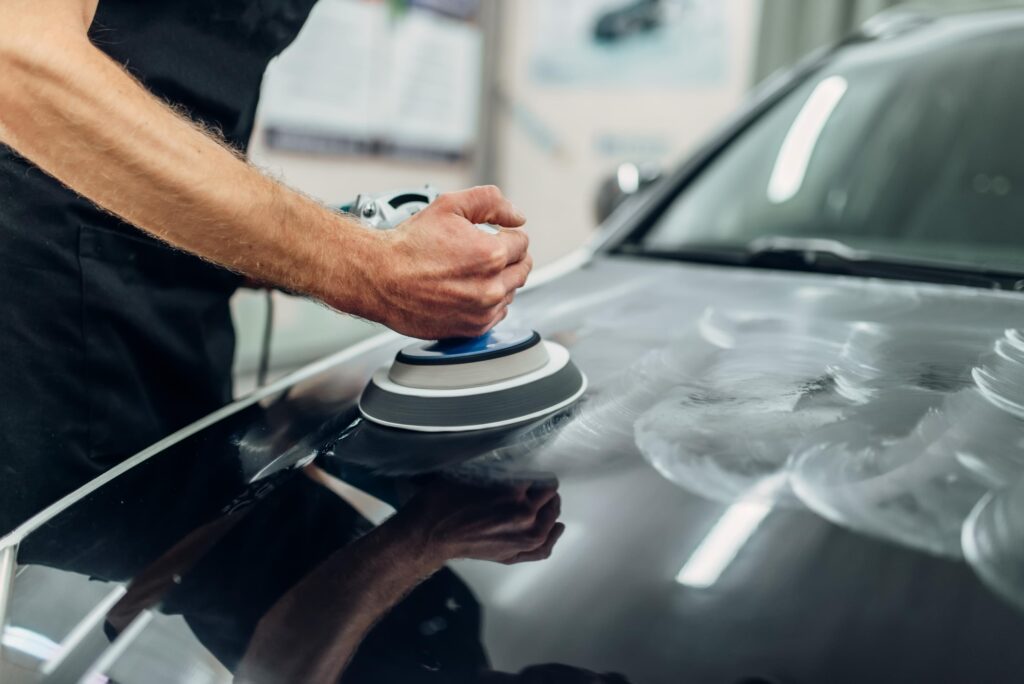Auto Detailing Package: The Complete Owner’s Deep Dive
Detailing is the process of making the appearance of a car so that it appears, feels and smells more pleasant than what it was. As opposed to quick washing it is a meticulous process that cleans, refines and safeguards all surfaces inside and out. Professionals start with a thorough inspection to understand conditions of the paint swirl marks, the presence of contaminants and wear on the interior. They plan out a process that usually begins by a thorough exterior clean and then paint decontamination and repair, then ending with protection. Detailing the interior of the building targets dust, oil, and embedded dirt that normal vacuuming is unable to reach. It's not just cosmetic; proper detailing helps surfaces last longer and perform as intended. If you come across a car that appears "new" after years on the road, you're seeing the result of a meticulous cleaning process and intelligent choice of protection.

An exterior feature that is safe begins with a prewash that is contactless to release and soften the dirt prior to physical contact. Thick foam clings to panels, dissolving road film while the dwell time permits the surfactants to remove particles from the coat of clear. After a soft rinse hand washing is done using the two bucket method, grit guards, and separate mitts for lower and upper panels to reduce the risk of micro-marring. Tires, wheels, and wells have brushes of their own and the right pH cleaners as brake dust is extremely abrasive and may damage paint when transferred. Chemical decontamination is the next step, employing iron removers that bleed embedded metal and solvents that dissolve tar in order to release the stubborn streaks. The fine clay medium cuts away the contaminants that are bonded, leaving the paint smooth and ready for use. This procedure lays the groundwork for polishing pads to touch paint evenly and refine the paint rather than sifting particles into it.
The road to a flawless application of ceramic is a process that involves meticulous preparation and paint correction. After a contact safe wash and iron remover a clay bar or mitt pulls out bonded contaminants like rail dust, tar and even overspray. In bright lighting conditions the paint can then be measured and evaluated to plan an appropriate polishing plan that is suited to its hardness and defect type. Combining wool or microfiber pads can reduce the severity of scratches as well as the oxidation process, which is followed by refinement polish that increases clarity and shine. When the paint has been correct, all surfaces are wiped with an alcohol based panel prep solution to eliminate the oils that can block adhesion. The coating is applied in controlled sections, leveled, and flashed according to the temperature and humidity to ensure even coverage. It is recommended to wait for a period of cure, usually 12 to 24 hours before exposure to moisture locks in the protection you can see and feel.
It is a meticulous process since ceramic pro installer near me locks in what it appears like on the surface when the bonding process is complete. The procedure typically includes painting correction, an isopropyl or panel wipe to clean polishing oils, and a panel by panel application with a specific flash timeframe. Installers monitor the flash pattern, level points before they cure using constant lighting to detect streaks. Some systems stack a base layer for toughness and then a second layer that provides slickness or chemical resistance, each with particular curing times. Once the system is installed, it must be kept out of water for a brief period, and aggressive washing for the initial cure window. Ongoing care favors pH neutral shampoos as well as soft microfiber towels as well as periodic toppers made of silica to bring back slickness. When you follow this regimen it will ensure that the coating's self cleaning appearance and gloss are kept for a long time rather than months.

The procedure for application is governed by a specific pattern that includes applying, leveling and then buff within certain time frames as carrier solvents flash. Technicians work one small panel at a time, and are able to observe the pattern of flash and the conditions to avoid streaks or high spots. Certain systems have multiple layers of a base coat to ensure durability and a top coat that provides slickness as well as water behaviour, each having specific time-of-cure. Infrared curing lights can help accelerate cross-linking and improve performance, especially in cool or humid conditions. Once cured, maintenance is easy, yet purposeful using pH neutral wash and soft microfiber towels and a regular use of toppers that are safe for coatings for reviving slickness. The coating does not make a car invincible, but it makes cleaning easier and slows the rate that environmental damages accumulate. With that efficiency, owners tend to maintain their car in less time, and with fewer harsh chemical.
The choice between sealant, wax and ceramic coatings is contingent on your expectations, conditions, and routines for maintenance. If you are a fan of frequent hand wax sessions and want a warm glow, a top-quality wax will impress but needs regular repeat application. The latest polymer sealants provide sharper reflections and seasonal durability at a friendly price, perfect for daily driving. Ceramic coatings can be more costly upfront and require professional prep, yet they repay that cost with a simpler washing process as well as a stronger resistance to wear as well as a look which lasts. Owners in harsh sun and coastal salt or polluted urban zones see especially clear benefits in reduced staining and slower fading. The chosen method of protection is paired with a safe method of washing that are careful in drying, as well as cleaning your interior that is respectful of fabric as well as leather and plastics. Keep doing this regularly, and your car will look better, stay cleaner, and age gracefully, mile after mile.
Comments
Post a Comment